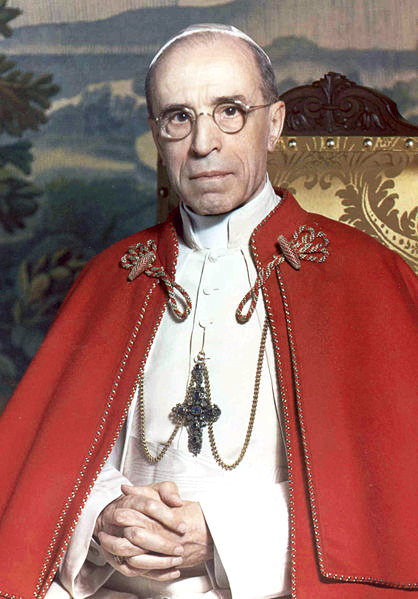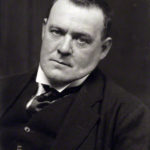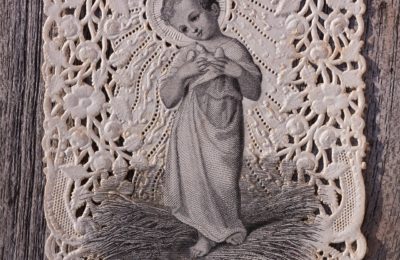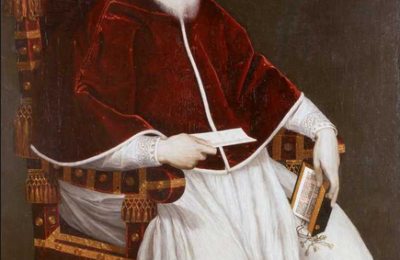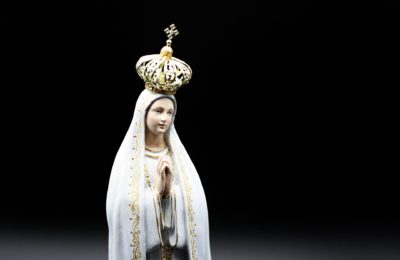The Blessed Virgin Mary is the Queen of Heaven and Earth. In 1954, Pope Pius XII instituted the liturgical feast of the Queenship of Mary which is celebrated yearly on the 31st of May. The following is an extended excerpt from his encyclical, Ad Caeli Reginam, where he institutes this lovely feast:
3. It is gratifying to recall that We ourselves, on the first day of November of the Holy Year 1950, before a huge multitude of Cardinals, Bishops, priests, and of the faithful who had assembled from every part of the world, defined the dogma of the Assumption of the Blessed Virgin Mary into heaven[1] where she is present in soul and body reigning, together with her only[1a] Son, amid the heavenly choirs of angels and Saints. Moreover, since almost a century has passed since Our predecessor of immortal memory, Pius IX, proclaimed and defined the dogma that the great Mother of God had been conceived without any stain of original sin, We instituted the current Marian Year[2] And now it is a great consolation to Us to see great multitudes here in Rome – and especially in the Liberian Basilica – giving testimony in a striking way to their faith and ardent love for their heavenly Mother. In all parts of the world We learn that devotion to the Virgin Mother of God is flourishing more and more, and that the principal shrines of Mary have been visited and are still being visited by many throngs of Catholic pilgrims gathered in prayer.
4. It is well known that we have taken advantage of every opportunity – through personal audiences and radio broadcasts – to exhort Our children in Christ to a strong and tender love, as becomes children, for Our most gracious and exalted Mother. On this point it is particularly fitting to call to mind the radio message which We addressed to the people of Portugal, when the miraculous image of the Virgin Mary which is venerated at Fatima was being crowned with a golden diadem.[3] We Ourselves called this the heralding of the “sovereignty” of Mary.[4]
5. And now, that We may bring the Year of Mary to a happy and beneficial conclusion, and in response to petitions which have come to Us from all over the world, We have decided to institute the liturgical feast of the Blessed Virgin Mary, Queen (May 31st in liturgical calendar, added SCF). This will afford a climax, as it were, to the manifold demonstrations of Our devotion to Mary, which the Christian people have supported with such enthusiasm.
6. In this matter We do not wish to propose a new truth to be believed by Christians, since the title and the arguments on which Mary’s queenly dignity is based have already been clearly set forth, and are to be found in ancient documents of the Church and in the books of the sacred liturgy.
7. It is Our pleasure to recall these things in the present encyclical letter, that We may renew the praises of Our heavenly Mother, and enkindle a more fervent devotion towards her, to the spiritual benefit of all mankind.
8. From early times Christians have believed, and not without reason, that she of whom was born the Son of the Most High received privileges of grace above all other beings created by God. He “will reign in the house of Jacob forever,”[5] “the Prince of Peace,”[6] the “King of Kings and Lord of Lords.”[7] And when Christians reflected upon the intimate connection that obtains between a mother and a son, they readily acknowledged the supreme royal dignity of the Mother of God.
9. Hence it is not surprising that the early writers of the Church called Mary “the Mother of the King” and “the Mother of the Lord,” basing their stand on the words of St. Gabriel the archangel, who foretold that the Son of Mary would reign forever,[8] and on the words of Elizabeth who greeted her with reverence and called her “the Mother of my Lord.”[9] Thereby they clearly signified that she derived a certain eminence and exalted station from the royal dignity of her Son.
10. So it is that St. Ephrem, burning with poetic inspiration, represents her as speaking in this way: “Let Heaven sustain me in its embrace, because I am honored above it. For heaven was not Thy mother, but Thou hast made it Thy throne. How much more honorable and venerable than the throne of a king is her mother.”[10] And in another place he thus prays to her: “. . . Majestic and Heavenly Maid, Lady, Queen, protect and keep me under your wing lest Satan the sower of destruction glory over me, lest my wicked foe be victorious against me.”[11]
11. St. Gregory Nazianzen calls Mary “the Mother of the King of the universe,” and the “Virgin Mother who brought forth the King of the whole world,”[12] while Prudentius asserts that the Mother marvels “that she has brought forth God as man, and even as Supreme King.”[13]
12. And this royal dignity of the Blessed Virgin Mary is quite clearly indicated through direct assertion by those who call her “Lady,” “Ruler” and “Queen.”
13. In one of the homilies attributed to Origen, Elizabeth calls Mary “the Mother of my Lord.” and even addresses her as “Thou, my Lady.”[14]
14. The same thing is found in the writings of St. Jerome where he makes the following statement amidst various interpretations of Mary’s name: “We should realize that Mary means Lady in the Syrian Language.”[15] After him St. Chrysologus says the same thing more explicitly in these words: “The Hebrew word ‘Mary’ means ‘Domina.’ The Angel therefore addresses her as ‘Lady’ to preclude all servile fear in the Lord’s Mother, who was born and was called ‘Lady’ by the authority and command of her own Son.”[16]
15. Moreover Epiphanius, the bishop of Constantinople, writing to the Sovereign Pontiff Hormisdas, says that we should pray that the unity of the Church may be preserved “by the grace of the holy and consubstantial Trinity and by the prayers of Mary, Our Lady, the holy and glorious Virgin and Mother of God.”[17]
16. The Blessed Virgin, sitting at the right hand of God to pray for us is hailed by another writer of that same era in these words, “the Queen[17a] of mortal man, the most holy Mother of God.”[18]
17. St. Andrew of Crete frequently attributes the dignity of a Queen to the Virgin Mary. For example, he writes, “Today He transports from her earthly dwelling, as Queen of the human race, His ever-Virgin Mother, from whose womb He, the living God, took on human form.”[19]
18. And in another place he speaks of “the Queen of the entire human race faithful to the exact meaning of her name, who is exalted above all things save only God himself.”[20]
19. Likewise St. Germanus speaks to the humble Virgin in these words: “Be enthroned, Lady, for it is fitting that you should sit in an exalted place since you are a Queen and glorious above all kings.”[21] He likewise calls her the “Queen of all of those who dwell on earth.”[22]
20. She is called by St. John Damascene “Queen, ruler, and lady,”[23] and also “the Queen of every creature.”[24] Another ancient writer of the Eastern Church calls her “favored Queen,” “the perpetual Queen beside the King, her son,” whose “snow-white brow is crowned with a golden diadem.”[25]
21. And finally St. Ildephonsus of Toledo gathers together almost all of her titles of honor in this salutation: “O my Lady, my Sovereign, You who rule over me, Mother of my Lord . . . Lady among handmaids, Queen among sisters.”[26]
Pius XII
Link to full text: pius-xii ad-caeli-reginam.

